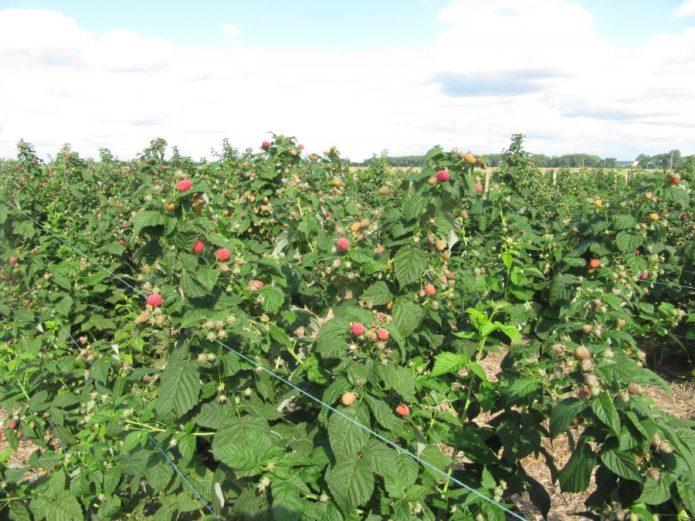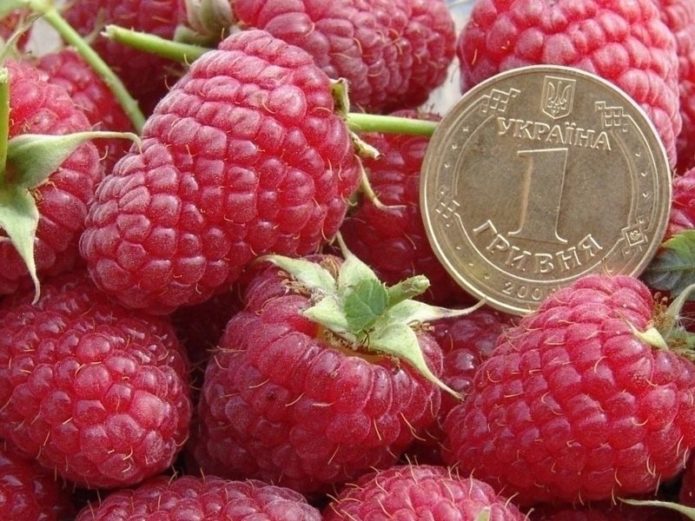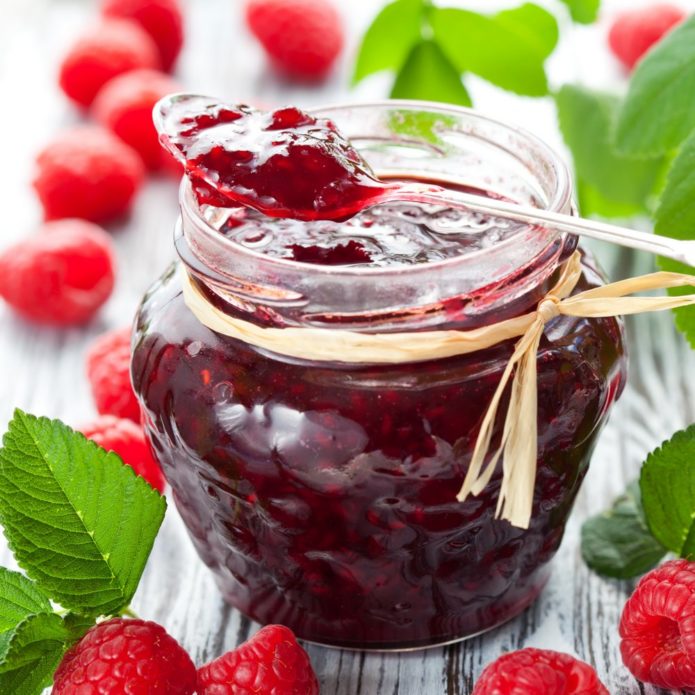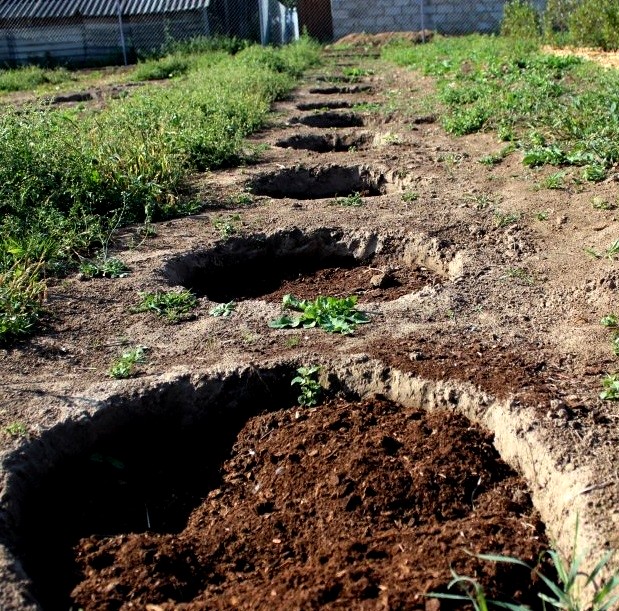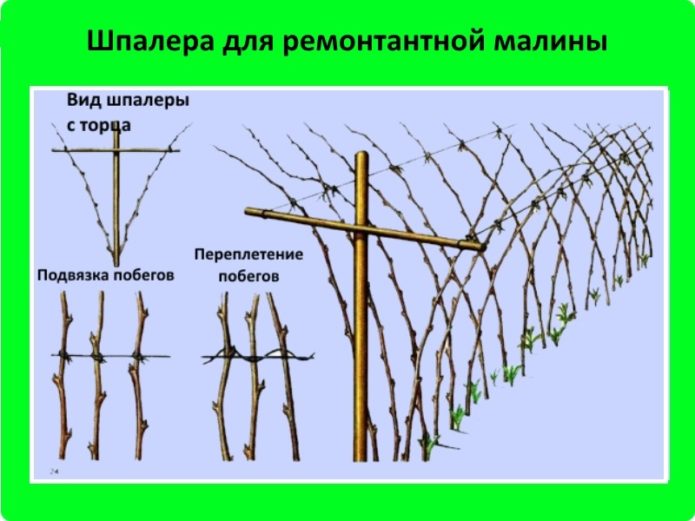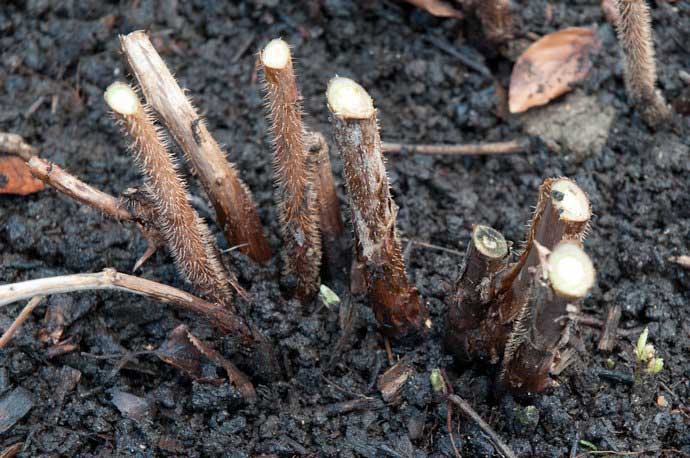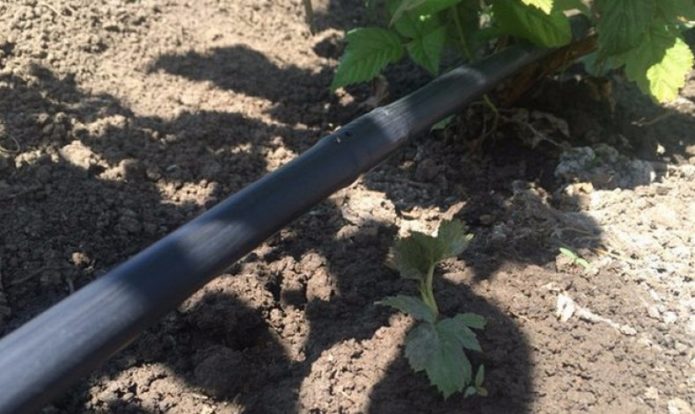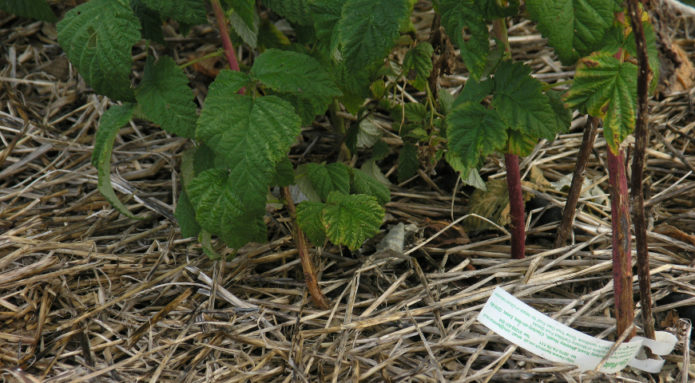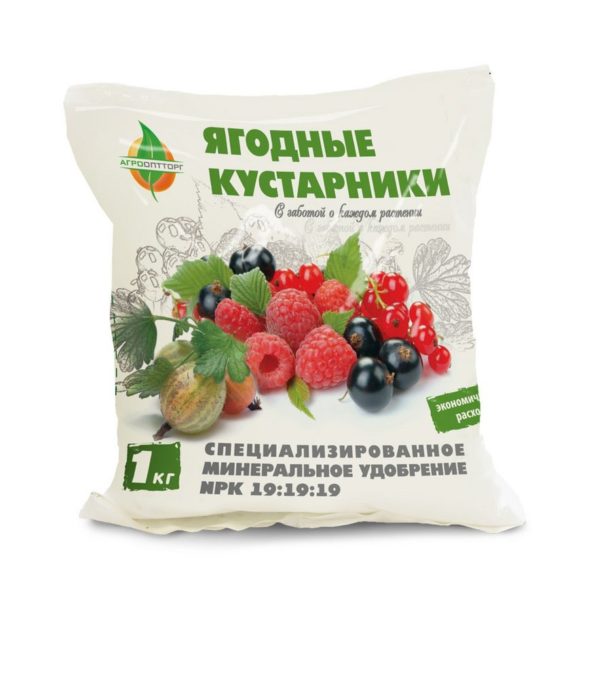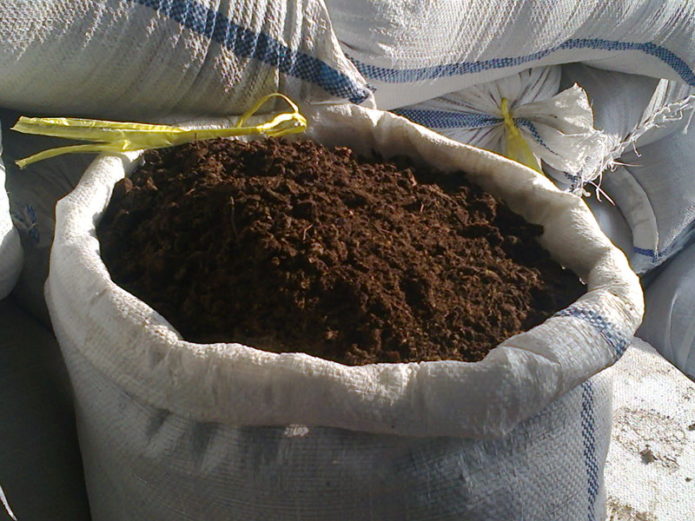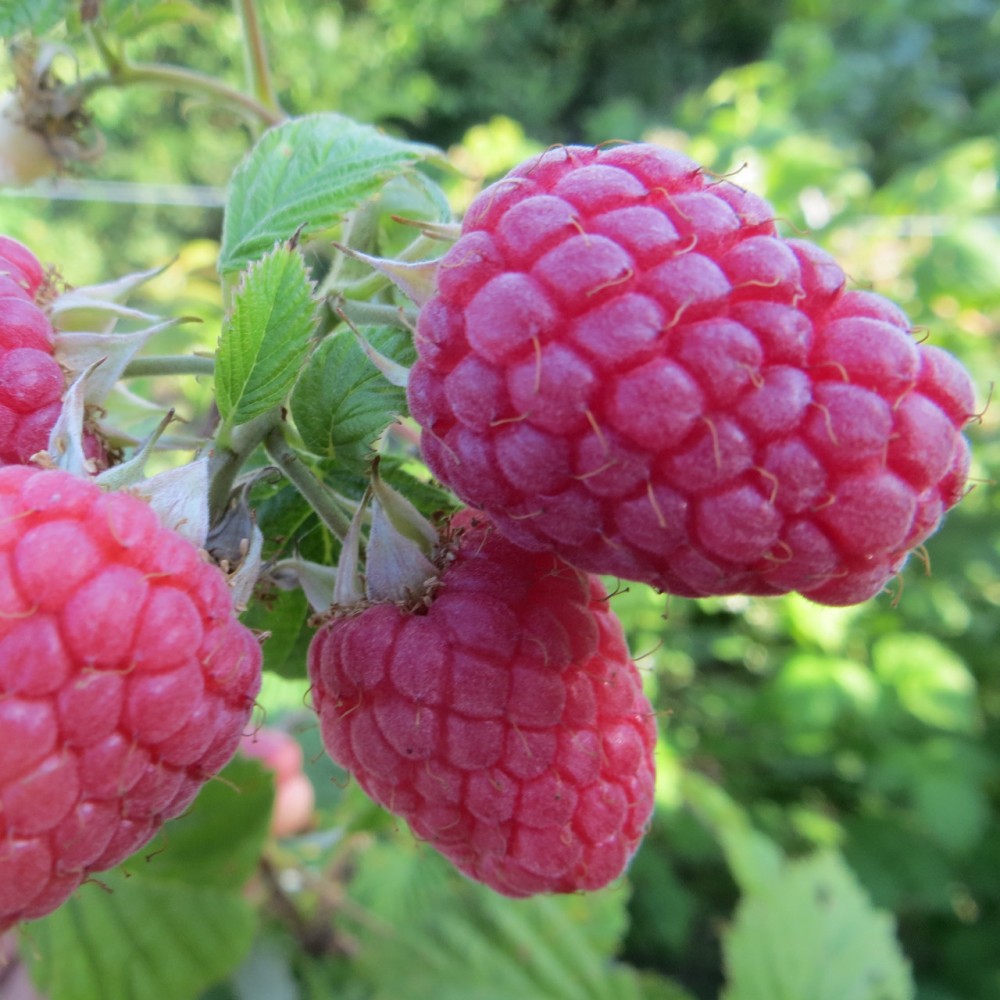The raspberry tree is almost an integral part of any garden plot. Extremely healthy and tasty berries are grown everywhere in Russia. Breeders are constantly developing new varieties - more productive, large-fruited, less susceptible to the vagaries of the weather. A separate category is remontant raspberries, which can bear fruit twice a season. These varieties include Brusvyana, a relatively recent bred, which gardeners have already appreciated.
Content
Description of Brusvyana raspberries, their advantages and disadvantages
The Brusvyana raspberry variety was bred in Ukraine (specifically - in the Zhytomyr region), in the nursery of the same name, which has already presented to gardeners such successful varieties of this berry as Brusilovskaya, Yaroslavna, Primara. The author of the development is its owner V.I.Dmitriev. The process took a long time. Work on the creation of a new variety began in 1993; plants with resistant traits appeared only 15 years later. The popular Polish variety Porana Rosa (Morning Dew) was taken as a basis, alternately crossed with various varieties of raspberries of Russian selection, mainly by Kazakov. Brusvyana was included in the Ukrainian State Register in 2008.
It was in honor of Brusvyan's "birthplace" that it got its name. In general, the old Russian word "lumber" means "crimson", "dark red". The name of lingonberry comes from the same root.
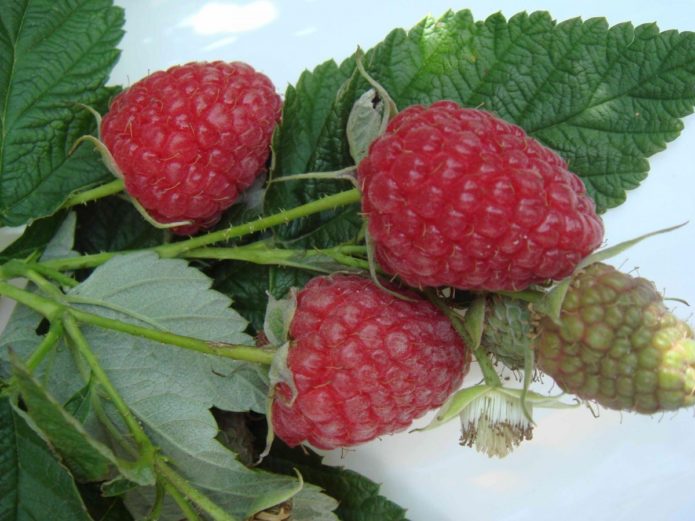
The dignity of Brusvyan's raspberry is far from being exhausted by the attractiveness of the appearance of berries.
This raspberry is the first remontant variety bred in Ukraine and received official registration. But so far, in many characteristics, it remains unsurpassed. Reparability is a property that allows bushes to bear fruit twice during the active growing season. Fruits are tied both on overwintered shoots and on branches formed this year. In the mild Ukrainian climate, both waves of fruits have time to ripen before frost, which significantly increases the yield. Brusvyana successfully takes root and bears fruit in Russia, but in a temperate climate, gardeners prefer not to take risks and harvest only once.
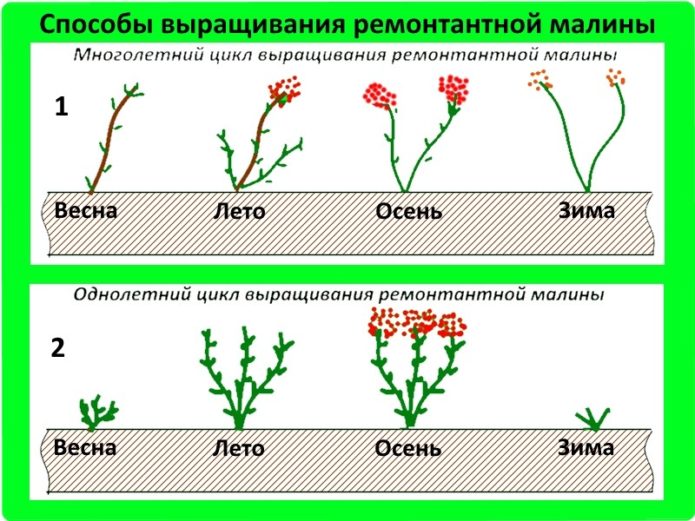
Any remontant raspberry can be grown in a one- or two-year cycle, depending on the climate in a particular region
Video: characteristic features of remontant raspberry varieties
Brusvyana looks rather unusual for raspberries. The bush rather resembles a small, intensively branching tree. Its height reaches 2–2.5 m. Thorns are almost absent, which greatly facilitates care and harvesting. Only the base of the branches is covered with rare small thorns. Such a "raspberry tree" not only bears fruit abundantly, but also decorates the site.
Shoots are very powerful, erect, their thickness reaches several centimeters. They rarely bend and break under the weight of the crop, gusts of wind. Nevertheless, Brusvyana needs a garter. The root system is poorly developed in comparison with the aboveground part. The leaves are large, highly wrinkled.
Brusvyana belongs to the category of early maturing varieties. The first crop is harvested in the middle or in the 20th of June, the next wave falls in the second half of August. The fruiting period often stretches until the end of October.
The berries look unusually presentable. They are large (weighing 15 g or more in the first wave, 7–8 g in the second), symmetrical, one-dimensional, regular cone-shaped, collected in a "brush" of several pieces. Color - crimson red, matte. The berries are fragrant, very fleshy, juicy, the seeds are very small. The fruits densely cover the upper two-thirds of the shoot, even when fully ripe, they do not crumble or soften for a long time. During the season, 4–8 kg of raspberries are removed from an adult bush. Of course, the maximum yield indicators are achieved only with competent agricultural technology.
The taste is also up to par. Brusvyana is distinguished by a recognizable tart-sweet, but not cloying and not insipid taste, with a light, pleasantly refreshing sourness. The latter is not liked by everyone, but it is highly appreciated by professional tasters and chefs. The taste was rated 4.5-4.6 points out of five.
The fruits do not fall apart into separate drupes when picked; they are not bad for raspberries in keeping quality and transportability. All this (coupled with the presence of a state certificate) makes the variety attractive not only for amateur gardeners, but also for professional farmers. Brusvyana retains its shape and characteristic aroma even during heat treatment. Compotes and preserves look very attractive.
Despite the fact that the variety was bred in Ukraine, frost resistance down to -30 ° С allows it to be cultivated in most of the territory of Russia and other former Soviet republics. It is actively cultivated, for example, in Belarus and Kazakhstan. The variety also tolerates heat well, berries are not "baked". Brusvyana's genetically built immunity against diseases typical of the culture is also quite good, at the level of standards.
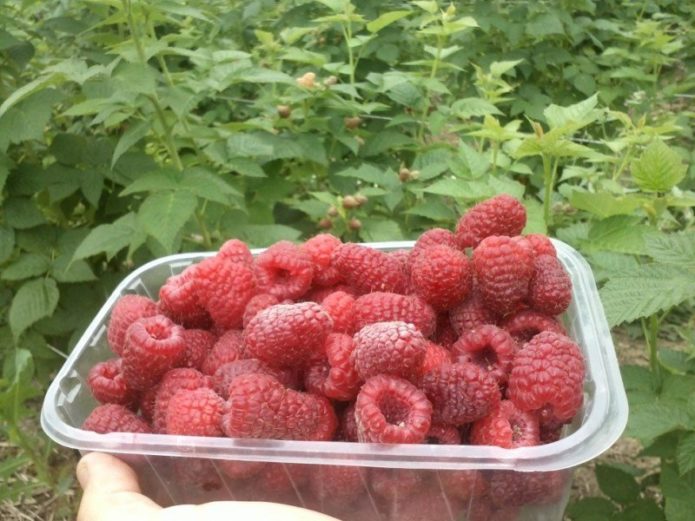
The Brusvyan raspberry variety was appreciated not only by amateur gardeners, but also by professional farmers
Difficulties with the reproduction of Brusvyana, as a rule, do not arise. During the season, starting from 3–4 years after planting in the ground, up to 6–8 replacement shoots are formed. But the root growth is extremely small. You don't have to worry that raspberries will "creep" all over the site.
The variety has very few disadvantages:
- if the summer is cold and rainy, Brusvyana begins to sour more than usual (but this applies to any kind of raspberry);
- a characteristic pungent smell emanates from the bush itself, which not everyone likes;
- correct watering is critically important - with a lack of moisture, the leaves and fruit ovaries dry and fall off, with an excess of moisture, the roots begin to rot;
- the skin is covered with a thin layer of whitish coating, which often alarms potential buyers;
- fruits in the first wave of the harvest are most often juicier and softer (because of this, they are not stored for a long time, but they have the most intense taste).
Among other popular raspberry varieties in Ukraine (Polka, Hercules, Phenomenon), Brusvyana wins in terms of yield, large-fruited, and presentable fruits. Some people think there are tastier berries, such as Joan Jay and Shugana, but this is purely a matter of personal preference. In addition, the taste strongly depends on the quality of the substrate, agricultural technology and climate, so such a comparison can hardly be considered correct.
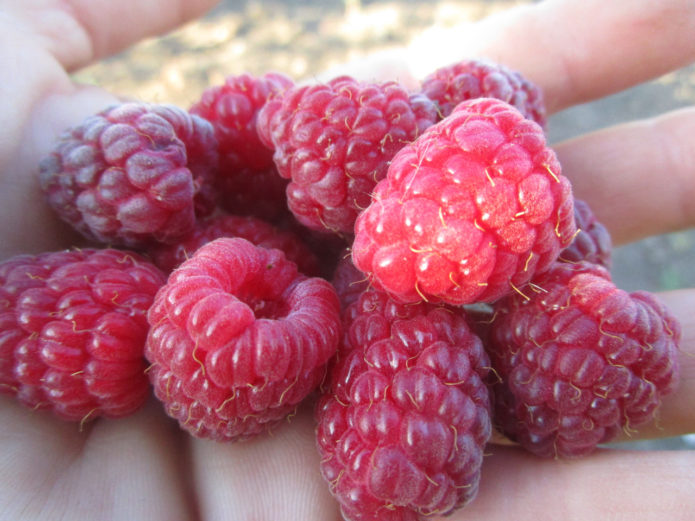
Malina Joan Jay is one of Brusvyana's competitors; some believe that it surpasses the described variety in taste, but this assessment is very subjective
Video: characteristics of Brusvyana raspberries
What you need to know about the disembarkation procedure and preparation for it
When choosing a place for Brusvyana seedlings, first of all be guided by how well the site is illuminated by the sun. Prolonged sun exposure does not harm either plants or berries, which retain their taste and juiciness. But with a shortage of light, raspberries become much sour, they practically lose their characteristic aroma, the yield decreases noticeably. The absence of drafts is also important for this variety, since the plants are quite tall. Also, the wind interferes with normal pollination and can damage young shoots. When disembarking Brusvyana at the wall or fence, retreat from the "obstacle" at least one meter.
The next important point is the quality of the soil. Abundant harvests require a high nutrient content of the substrate. An ideal option for Brusvyana is loose chernozem or a fairly light loam with neutral acidity. She categorically does not tolerate increased acidity of the soil. Find out this issue in advance, if necessary, add dolomite flour, crushed eggshells, and slaked lime to the soil.
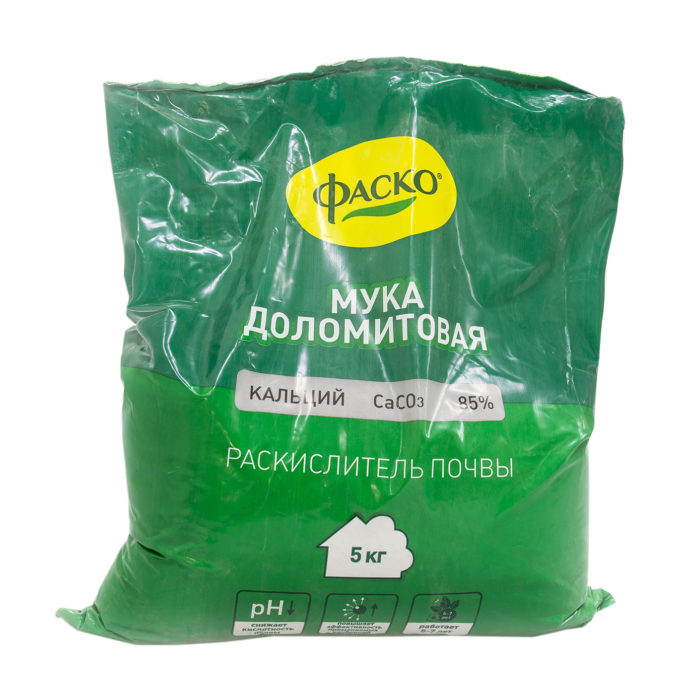
Dolomite flour is a natural soil deoxidizer, when the dosage is observed, it does not have any side effects
The Brusvyans also really do not like excess moisture and its stagnation in the soil. If in the selected area the groundwater approaches the surface closer than a meter, look for another option. Or you have to raise the bed, building an embankment about 50 cm high. Lowlands, where melt water and damp air stand for a long time, will not work either.
These raspberries require higher doses of fertilizers. When preparing a garden bed, they introduce not only organic matter (5–7 liters of humus or rotted compost per 1 m²), but also simple superphosphate, potassium sulfate (50 g and 40 g per 1 m², respectively). The depth of the planting pit is at least 50 cm. It is prepared at least three weeks before disembarkation.
Before planting, Brusvyana's roots are dipped in a mixture of powdered clay, cow dung and biostimulant. They are quite weak, they will need additional nutrition and protection until the plant adapts to a new place. The tops of the shoots are cut off at a height of 15–20 cm so that all forces after planting are directed specifically to the development of the roots.
The date of planting Brusvyana is exclusively a personal matter of the gardener, if it is grown at home. Two periods are possible - the first half of April or September. In temperate regions where cold weather can come suddenly, a spring planting is recommended. In any case, the soil temperature at a depth of 10–12 cm should be at least 15 ° С.
Plants are large enough, intensively branching. When laying a whole raspberry tree between the bushes, Brusvyany leaves at least 80-100 cm if they are planted in trenches and 120-150 cm when planted in separate holes. The row spacing is about 2 m. If the area of the plot allows, it can be increased up to 3 m. When grown on an industrial scale, 95-115 plants are placed per 100 m².
Provide a place for the trellis in advance. Brusvyany bushes can simply be turned out of the ground during strong gusts of wind. The simplest option is poles with several rows of horizontally stretched strong wire. The height of the trellis is about a third more than the shrub itself. Also suitable for Brusvyana T- and V-shaped structures. Shoots to the trellis are attached with twine or fabric tape.
Brusvyana is a popular variety among gardeners, so fakes are often on sale. To minimize the risk of purchasing low-quality planting material, purchase from reputable nurseries from trusted farmers. The roots of the seedling must be kept in a humid environment.Otherwise, they dry out very quickly, the plants then do not take root well.

High-quality planting material is the key to a bountiful harvest in the future; this applies to any horticultural crops
Planting a seedling has no distinctive features in comparison with other varieties of raspberries. The main thing is to control the position of the root collar in the process, so that in the end it is 4–5 cm above ground level and thoroughly compact the soil, avoiding the formation of air pockets. After planting, the seedling is watered, consuming 5-7 liters of water.
Video: planting remontant raspberries
Important nuances of crop care
Brusvyan does not have any special nuances in comparison with other remontant varieties of raspberries in terms of agricultural technology. Leaving it completely without care will not work if you are counting on a rich harvest.
An essential advantage of the variety is the minimum of difficulties with pruning. In autumn, if one harvest is planned, all available shoots are simply cut off, leaving "hemp" 2-3 cm high and covering the roots with a thick layer of mulch. If the property of remontance is used, it will simply not work to bend the shoots to the ground, as they do with other varieties of raspberries. Brusvyanu is left to winter like a fruit tree.
It is not recommended when cultivating this variety and pinching the tops of the shoots. This slightly increases the overall yield, but negatively affects the size and taste of the berries. In addition, the fruiting dates are shifted by about two weeks. In temperate climates, this can be critical.
The main thing that Brusvyane requires from a gardener is timely and regular watering. The ideal option is a drip irrigation system that allows you to wet the substrate to the required depth (about 40 cm). You can also practice longitudinal furrow irrigation between rows. Under the root is not the best option, since the soil is washed off from the roots, they dry out quickly.
Plants especially need watering during flowering and the formation of fruit ovaries. The intervals between treatments are adjusted depending on how often it rains. In dry, not too hot weather Brusvyana is watered every 10-12 days, spending 20-30 liters of water per adult plant. When the temperature rises to 27-30 ° C, the intervals are reduced to 5-7 days. If you overdo it with watering, mold and other pathogenic fungi develop very quickly on the bases of the shoots.
To retain moisture in the soil, it is periodically mulched. Mulch has one more useful property, allowing the gardener to save time on weeding. It is undesirable to use needles, sawdust of coniferous trees, which acidify the soil, in the raspberry tree.
Video: tips for caring for remontant raspberries
This variety of raspberries requires increased doses of fertilizers, starting from the second year in the open field. Brusvyana reacts equally well to both natural organic matter and mineral supplements. It is advisable to do without folk remedies - they, unlike complex mineral fertilizers, do not contain macro- and microelements in the concentration required for remontant varieties.
Humus is an excellent tool for maintaining soil fertility. During the growing season, it is applied under Brusvyanu 2-3 times. It is imperative to mulch the soil in the raspberry tree during flowering shrubs.
In order to avoid the development of diseases, prevention is quite enough.At the beginning and at the end of the growing season, Brusvyanu and the soil in the raspberry grove are treated with a solution of any fungicide of biological origin. Such products are safe for humans and the environment. Alirin-B, Maxim, Bayleton, Baikal-EM are popular among gardeners. During the summer, planting raspberries every 2-3 weeks is sprayed with a solution of mustard powder, baking soda or soda ash, potassium permanganate, kefir diluted with water. An unpleasant odor spread by bushes is a fairly reliable protection against insects.
Video: summer fruiting Brusvyana
Gardeners reviews
Brusvyan is the third year. Fruits weighing up to 7–8 g. Shoot thickness - 1.5 cm. Productivity - no more than 4 kg.
I took a variety of raspberries Brusvyana in the nursery of the same name, two bushes. One, however, ruined the overflow. The survivor gave a small harvest. So I can't judge the yield yet. But the taste is excellent, I have not tasted it tastier yet. But it reproduces very tightly - there is practically no overgrowth.
The disadvantage of the Brusvyana variety is that it does not bear fruit along the entire length of the shoot, but sometimes grows up to 2.5 m. A significant advantage over many other varieties is unpretentiousness and growing without a garter. In addition, a bush can be formed by pinching the shoot at the desired height, and then the side branches grow and bear fruit, as in a small tree. I form several at once in height. From a meter and above. Other varieties can also be formed in this way, but they will not withstand the whole mass, and Brusvyana grows without problems. Only if you pinch the top, then no more than two shoots should be left on the bush. Compared to Joan Jay, Brusvyana definitely loses in yield, and the classic Regiment will give her a head start on equal terms. Although her berries are really tasty, I would not plant entire plantations for the sake of profit.
Last year I did not measure the yield, I did not weigh the berries, but to cut the shoots in the fall, I had to buy a two-handed pruner. Some specimens were 45–50 mm at the base. In my climate Brusvyana shows itself excellently. Stability, productivity, multiplication, taste and size of berries are all at their best. Next season I plan to leave for two fruiting - I feel that there is potential.
Brusvyana's berry is quite transportable. And the taste ... I don't even know how to say ... Last year it was tastier, then the ripening fell under the good sun. In this - the rains are frequent with us. Well, the taste, accordingly, has deteriorated. In comparison, Brusvyana is still sweeter than the Bryansk miracle, the Ruby necklace or Eurasia, but sour than the Orange miracle.
I planted Brusvyanu this spring. During the season, it showed confident powerful growth, built up a good root system, almost from a 10 cm long root piece with a root bud. Until late autumn, I did not observe any diseases on Brusvyan, chemical treatment was not carried out. Watering - drip + mulching. The berry is dense, I liked the taste.
The declared thickness of the shoot is surprising - my specimen is no more than 2 cm, but the shoots were distinguished by their power and height. The berries were really gorgeous, and this is already in the first year of planting. These Brusvyana berries made a strong impression not only on me. And this is with the usual care without stimulating dressings. The huge potential of the variety is felt.
Unripe to cold berries on the Brusvyana bush remained fairly, about 20%. The taste is not bad, it did not deteriorate very much during prolonged cold snaps and rains. Very good resistance to rot.
Old Kichinovski varieties are very susceptible to viruses. And the large-fruited Brusvyana is one of the most delicious. I also removed Tarusa after the first tasting. Although I generally prefer blackberries for taste. But where is without raspberries?
Brusvyan's raspberry cannot be called a universal variety, suitable for growing in almost any region. It manifests itself best in a warm southern climate. He is the experience of gardeners testifies: competent agricultural technology is able to compensate for not quite suitable conditions and the vagaries of the weather. And in terms of the quantity and quality of fruits, Brusvyana is definitely on top. The berries look very presentable, are large in size, pronounced recognizable taste and aroma.

